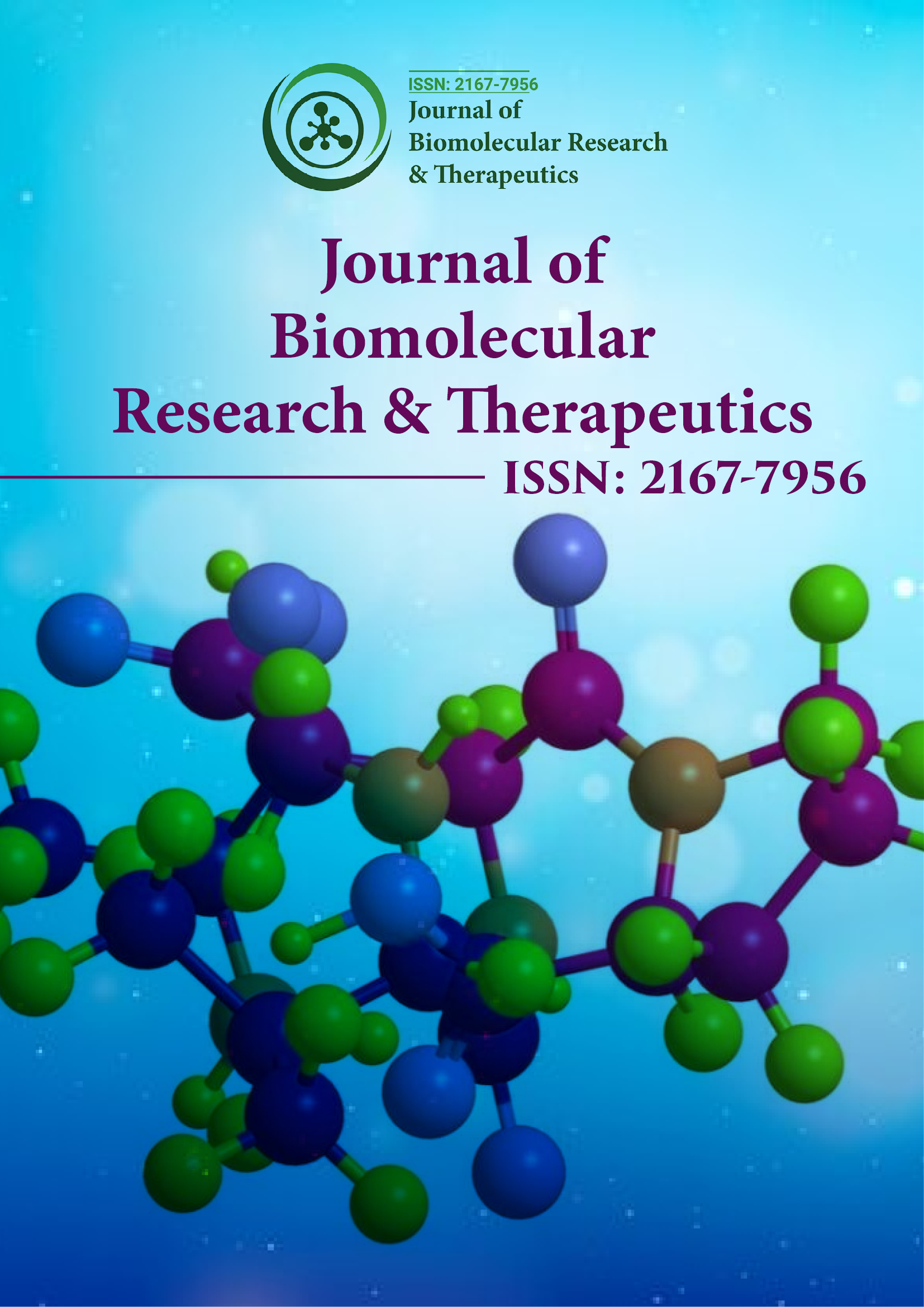Indexed In
- Open J Gate
- Genamics JournalSeek
- ResearchBible
- Electronic Journals Library
- RefSeek
- Hamdard University
- EBSCO A-Z
- OCLC- WorldCat
- SWB online catalog
- Virtual Library of Biology (vifabio)
- Publons
- Euro Pub
- Google Scholar
Useful Links
Share This Page
Journal Flyer

Open Access Journals
- Agri and Aquaculture
- Biochemistry
- Bioinformatics & Systems Biology
- Business & Management
- Chemistry
- Clinical Sciences
- Engineering
- Food & Nutrition
- General Science
- Genetics & Molecular Biology
- Immunology & Microbiology
- Medical Sciences
- Neuroscience & Psychology
- Nursing & Health Care
- Pharmaceutical Sciences
Opinion - (2025) Volume 14, Issue 3
The Role of Systems Biology in Therapeutic Innovation
Daniel Fischer*Received: 28-May-2025, Manuscript No. BOM-25-29607; Editor assigned: 31-May-2025, Pre QC No. BOM-25-29607; Reviewed: 14-Jun-2025, QC No. BOM-25-29607; Revised: 20-Jun-2025, Manuscript No. BOM-25-29607; Published: 28-Jun-2025, DOI: 10.35248/2167-7956.25.22.447
Description
Systems biology integrates data from multiple biological levels to create holistic models of complex processes. By examining interactions among genes, proteins, metabolites and cells, systems biology provides insights that are not accessible through reductionist approaches. This perspective is increasingly valuable in therapeutic innovation, where understanding disease complexity is essential for developing effective treatments. A key strength of systems biology lies in its ability to model disease networks. For example, in cancer, mutations do not act in isolation but disrupt interconnected pathways. Systems-level models help identify central nodes within these networks that can be targeted therapeutically. This has led to the identification of novel drug targets and combination therapy strategies that are more effective than single-agent approaches. Such integrative models can also predict mechanisms of resistance, enabling researchers to preemptively develop strategies to overcome or delay treatment failure.
In infectious diseases, systems biology has been used to model host-pathogen interactions. By integrating transcriptomic, proteomic and metabolomics data, researchers can map how pathogens manipulate host responses and identify vulnerabilities for therapeutic intervention. These models are particularly useful for understanding emerging pathogens and guiding rapid drug development. During the COVID-19 pandemic, systems biology approaches were instrumental in identifying host factors exploited by the SARS-CoV-2 virus, leading to the repurposing of existing drugs and the acceleration of vaccine development. Systems biology also contributes significantly to personalized medicine. By integrating genomic and clinical data, patient-specific models can predict responses to different treatments. These predictions support individualized therapy decisions, minimizing trial-and-error prescribing and improving outcomes. For example, in oncology, tumor-specific signaling networks derived from multi-omics data can guide the selection of targeted therapies based on a patient’s unique molecular profile. Similarly, in autoimmune and metabolic diseases, systems models help stratify patients based on disease subtypes or likely responses to specific biologic therapies.
One emerging application is in the field of immunotherapy. The immune response is governed by intricate signaling cascades and feedback loops. Systems biology can deconstruct these interactions to understand why some patients respond to checkpoint inhibitors while others do not. These insights are critical for optimizing immunotherapy regimens and identifying biomarkers of response or resistance. The integration of computational modeling with experimental validation is central to systems biology. Models generate hypotheses that can be tested in the laboratory, while experimental data refine and improve models. This iterative cycle accelerates discovery and enhances the reliability of predictions. The use of organoids and lab-on-a-chip technologies is also complementing in silico models, enabling real-time testing of therapeutic hypotheses in biologically relevant systems.
Challenges include managing the enormous complexity of biological systems and ensuring that models are both accurate and interpretable. Biological networks involve thousands of interacting components and small changes in one part of the system can lead to unexpected outcomes elsewhere. Capturing these nonlinear interactions and feedback loops requires sophisticated computational frameworks and large, high-quality datasets. Advances in machine learning, high-throughput data generation and computational power are addressing these issues, making systems biology increasingly practical for therapeutic research. Deep learning algorithms, in particular, are now being used to detect hidden patterns in omics data that may elude conventional statistical techniques. Moreover, the emergence of standardized data repositories and integrative platforms is helping researchers share, compare and validate systems-level data across institutions and disciplines. Initiatives like the Human Cell Atlas (HCA) and international consortia in cancer and infectious disease research are enabling the pooling of massive datasets for more comprehensive and accurate modeling. Such collaboration fosters reproducibility and accelerates the pace of discovery.
As systems biology matures, its impact on therapeutic innovation is expected to grow. By providing holistic insights into disease mechanisms and guiding rational intervention strategies, it represents an essential tool for advancing the next generation of therapies. It bridges the gap between data and clinical decision-making, ensuring that the vast amounts of biological information generated in modern research are translated into meaningful therapeutic outcomes. Furthermore, as personalized and precision medicine continue to evolve, systems biology will play a central role in integrating patient-specific data to design targeted, adaptive and more effective treatment plans. This dynamic approach can vastly improve the likelihood of therapeutic success, particularly in complex diseases where individualized treatment is paramount. With the increasing complexity of diseases, systems biology allows for not just a deeper understanding of their root causes but also for more personalized, optimized therapies that are more likely to improve patient outcomes.
Citation: Fischer D (2025). The Role of Systems Biology in Therapeutic Innovation. 14.447
Copyright: © 2025 Fischer D. This is an open access article distributed under the terms of the Creative Commons Attribution License, which permits unrestricted use, distribution and reproduction in any medium, provided the original author and source are credited

